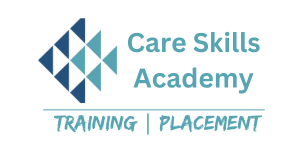Introduction to ECM Repairing
The Engine Control Module (ECM), also known as the Engine Control Unit (ECU), is a critical component in modern vehicles, responsible for managing the engine’s performance, fuel efficiency, and emissions. An ECM repairing course is designed to equip technicians with the knowledge and skills necessary to diagnose, repair, and maintain these sophisticated electronic systems.
Course Objectives
The primary objectives of an ECM repairing course are to:
- Provide a thorough understanding of ECM functionality and architecture.
- Teach diagnostic techniques for identifying ECM-related issues.
- Train students in the use of specialized tools and equipment for ECM repair.
- Develop practical skills for repairing or replacing faulty ECM components.
- Ensure proficiency in testing and verifying ECM repairs to guarantee vehicle performance.
Curriculum Breakdown
1. Introduction to ECM Systems
- Overview of ECM: Understanding the role and importance of the ECM in vehicle operations.
- Components and Architecture: Detailed study of ECM components, including microcontrollers, sensors, actuators, and wiring.
- Communication Protocols: Learning about communication protocols such as CAN (Controller Area Network) and OBD-II (On-Board Diagnostics).
2. Diagnostic Techniques
- Fault Code Retrieval: Using diagnostic tools to retrieve error codes stored in the ECM.
- Interpreting Diagnostic Trouble Codes (DTCs): Understanding how to interpret DTCs and link them to specific issues.
- Sensor and Actuator Testing: Methods to test sensors and actuators connected to the ECM.
3. Repair and Maintenance
- ECM Testing Equipment: Familiarization with oscilloscopes, multimeters, and scan tools.
- Component-Level Repair: Techniques for repairing or replacing individual components such as capacitors, resistors, and integrated circuits.
- Reprogramming and Updating ECM: Procedures for updating ECM software and firmware to the latest versions.
4. Practical Training
- Hands-On Lab Sessions: Real-world scenarios where students diagnose and repair ECMs.
- Case Studies: Analysis of common ECM failures and successful repair strategies.
- Workshops: Interactive workshops focusing on advanced diagnostic and repair techniques.
5. Testing and Verification
- Post-Repair Testing: Ensuring repaired ECMs are functioning correctly through comprehensive testing.
- Performance Verification: Techniques to verify that the ECM restores the vehicle’s performance to optimal levels.
Learning Outcomes
Upon completing the ECM repairing course, participants will:
- Have a solid understanding of ECM systems and their role in vehicle operation.
- Be adept at diagnosing ECM-related issues using advanced diagnostic tools.
- Possess the skills to perform detailed repairs on ECM components.
- Be capable of reprogramming ECMs and updating their software.
- Have practical experience through hands-on lab work and real-world scenarios.
Career Opportunities
Graduates of the ECM repairing course can pursue various career paths, including:
- Automotive Technician: Specializing in ECM diagnostics and repair within auto repair shops or dealerships.
- Electronics Technician: Working with automotive electronics manufacturers or aftermarket ECM suppliers.
- Field Service Engineer: Providing on-site ECM repair and maintenance services for fleets and large automotive companies.
- Technical Trainer: Teaching ECM repair techniques in vocational schools or training centers.
Conclusion
An ECM repairing course offers a comprehensive education in one of the most critical aspects of modern vehicle maintenance and repair. With a blend of theoretical knowledge and practical skills, participants are well-prepared to address the challenges of ECM diagnostics and repair, ensuring the optimal performance of today’s complex automotive systems.

